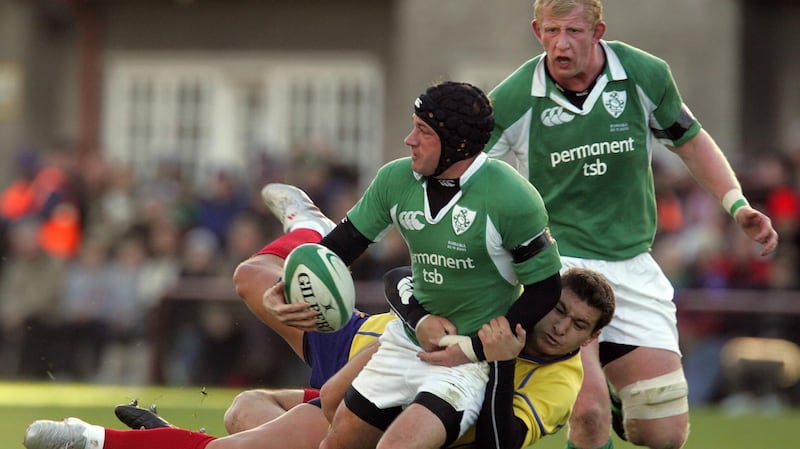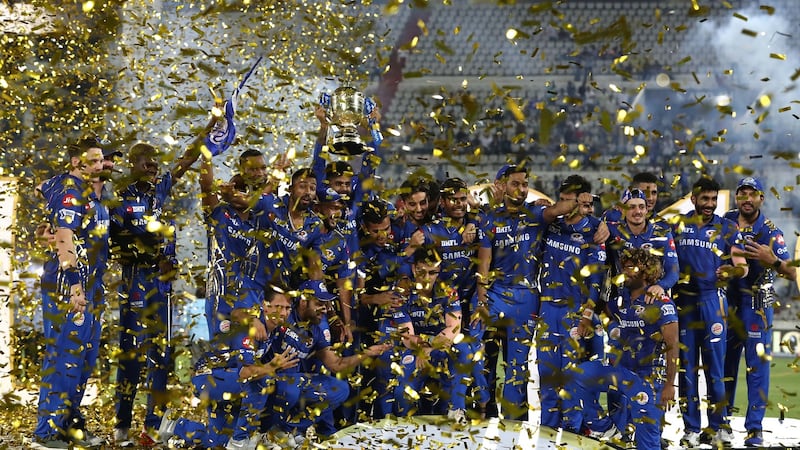World 12s, the international rugby organisation responsible for the proposed new annual rugby 12s tournament in 2022, has today announced David Humphreys as its rugby consultant.
The former Ulster outhalf was capped 72 times by Ireland before having separate six-year stints as a director of rugby with his native province and Gloucester. Humphreys joins the new organisation to support the negotiations and discussions with the key stakeholders within the rugby world.
Designed along the lines of cricket’s Indian Premier League (IPL), World 12s are proposing to hold the inaugural tournament over a three-week window in England during August/September 2022, with the host country to change annually.
When first launched last month, the World 12s would have met with a sceptical response, not least as there appears to be little room in a congested rugby calendar.
Humphreys accepts as much, although he is convinced the tournament will hold appeal to players and coaches, as well as the game’s stakeholders.
Speaking exclusively to The Irish Times, Humphreys said: “We used to sit and watch the IPL in Gloucester over lunch or breakfast, and the conversation would be ‘do you think they can ever find a similar format or vehicle in rugby?’ They were thinking of it from the player point of view because of the money involved and it was a discussion that went on for many years.
“That’s why I really like the concept for a whole lot of reasons, but the biggest challenge we face is just finding that spot in the global calendar. That’s what I’ve been trying to do, and I’m open to suggestions.”
But the bottom line remains that any player contracted to a club or union cannot play in a competition that is not sanctioned by World Rugby.
“That’s correct,” admits Humphreys, “and the people involved in the World 12s have always been very, very clear. This isn’t a rebel competition. This is a competition that we very much want aligned to World Rugby, all the unions and the clubs, because we believe it can be for the benefit of the game, both financially for the players but also for the sport.”
He cited, as an example, the opportunities he had as a player with the Barbarians and added: “Every sport has got to continually evolve.”

Humphreys joins a heavyweight team. Ian Ritchie, the former chief executive of the RFU, is its chief executive, with former NZRU ceo Steve Tew and former chairman of the WRU, Gareth Davies are senior representatives of World 12s.
In addition to the board and executive team, Steve Hansen, Jake White, Schalk Burger, Matt Giteau and Ugo Monye are ambassadors.
There will be eight franchises, employing squads of 24 players each, with a minimum salary cap of €1.64 million and a maximum salary cap of €2.57million.
With an average salary of around €100,000 for three weeks work, and the capacity to earn up to €250,000 in elite cases, the World 12s would appeal to players, and comparative compensation to clubs or unions would sooth opposition from the stakeholders. Players can be contracted to a franchise for up to three seasons.
Each team will have to include two Tier Two players and an under-20 player. With player welfare in mind Ross Tucker, a sometime adviser to World Rugby, has been engaged and there is to be a maximum game time of, say, 50 minutes per week, and a limit on training time.
A women’s tournament is set to come on board in 2023 and the organisers aim to invest close to €300 million of new financial support into the global game over the next five years.
While the odds are against it, we know that money talks.
The organisers claim there have already been real expressions of interest in the franchises and there is, apparently, serious money behind this venture. But of course, the money men are not doing this just for the love of the game.
The vast sums would be generated by franchise ownership, television rights, sponsorship and, it is hoped, full stadia.
Nevertheless, you’d wonder what CVC’s attitude will be to the emergence of a rival competition after ploughing so much money into the sport.
Among the sceptics is Exeter’s long-serving Director of Rugby Rob Baxter.
“The biggest thing that bothers me when these proposals are thrown around, and I don’t mind saying it, is player discontent. Straight away, from a managerial point of view, if this goes ahead what’s the outcome going to be?” Baxter told Rugby Pass.
“It’s basically going to be players put in the middle - they are going to be the jam in the sandwich again between clubs and unions. These people [the tournament organisers] are going to offer, I am assuming, quite a lot of money to try and attract them to play, and the player is going to turn around and he is going to have to ask to be released from contractual obligations. That was the first thing I thought.
“How does it fit into any player’s contract because most of them will be under contract for twelve months of the year and it doesn’t fit into that without player release,” said Baxter, overlooking the carrot of handsome compensation to the clubs and the Unions.
Even so, while also questioning the comparison with cricket, Baxter maintained: “There are going to be a lot of confrontational meetings and problems before I can see it even getting off the ground.”
Ultimately too, a player pool of 192 is a relatively small, elite number. Ala the IPL, the intention is that all nominated players would be divided into six categories and set their own base valuation for the player auction.
“So each player has a minimum price at which he would be willing to play in the competition. However, when it goes to auction there is no individual maximum or minimum cap for each player, but there is an overall maximum salary cap. That’s why a live auction will be quite interesting to watch in itself.”
To date, discussions with players’ representatives have been informal but ideally Humphreys and co want as broad an international spread as possible.

One could readily envisage players like Garry Ringrose, Caelan Doris, Jordan Larmour, Tadhg Furlong, Andrew Porter, James Ryan, Ryan Baird and Dan Sheahan and many others in Leinster holding huge appeal. Ditto the likes of Simon Zebo, Conor Murray, RG Snyman and Damian de Allende in Munster, and most obviously Iain Henderson in Ulster and Bundee Aki in Connacht.
“Our goal is to have the best of the best playing,” said Humphreys. “Ireland is one of the top five nations in world rugby and has been for a long period of time. We want Irish players to be given the opportunity to play in these teams.”
One problem which immediately surfaces is that while several Leinster players would be attractive propositions for franchises, and the feeling might well be mutual, Leo Cullen and his counterparts might be loath to lose a hatful of them, even in pre-season.
“It very much depends on which club you’re talking about because where they are in their season may or may not have an impact on their ability,” said Humphreys.
“When you consider the depth of the Leinster squad, some of their best players might not necessarily be playing at that time in any case. Therefore, four or five of the top Leinster players, four or five of the top Munster players, may play in that tournament if, say, we can build it into part of their pre-season programme.”
Even then, in a Lions year such as this one (with the Rugby Championship in full flow come August and September) or World Cup year, finding a window becomes more problematic, and might have to be flexible.
"We also want the best head coaches in the world to test themselves in a new concept. It's as simple as that," said Humphreys. While also likely to provide an opportunity for up-and-coming coaches, if Hansen and White are to be complemented by the likes of Joe Schmidt, Warren Gatland and co, they would also be handsomely remunerated.
World 12s would follow the current laws of 15s, but with some adaptations to augment the increased space on the pitch and ball-in-play time.
Teams would comprise of six forwards and six backs, with 30-minute matches of two 15-minute halves. Conversions would be drop kicked. There would only be one scrum reset, followed by a free kick. Scrum infringements are to be penalised by a differential penalty (ie it cannot be kicked at goal). In the knock-out stages, if matches are tied at full time, a golden point will decide the winner
“We want the best players in the world playing in a different competition that’s fast-flowing,” said Humphreys. “It’s exciting to be part of something that could change the direction of the way the game is going and hopefully appeal to a wider audience.”
But even in a mere three-week window, two key stumbling blocks remain, namely finding the right window and acquiring World Rugby approval.











